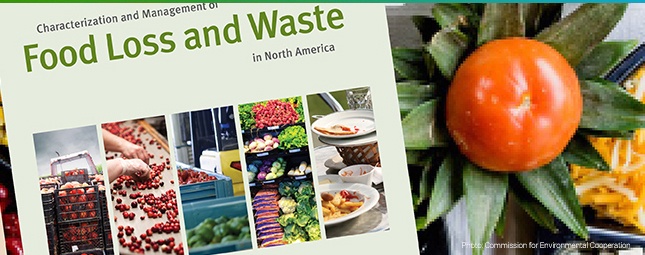
The Commission for Environmental Cooperation (CEC) recently released a comprehensive report on the state of food loss and waste in Canada, Mexico and the United States developed through the CEC’s North American Initiative on Food Waste Reduction and Recovery. Characterization and Management of Food Loss and Waste in North America documents adverse socio-economic and environmental impacts of food loss and waste, and actions that the industrial, commercial, institutional, government and nongovernmental sectors can implement to mitigate these impacts.
LeanPath CEO Andrew Shakman is proud to be a supporting author to the report.
Food Loss and Waste in North America
The report estimates that 168 million tonnes of food are wasted in North America each year, with Americans wasting 415 kilograms (915 pounds) per capita, Canadians 396 kilograms (873 pounds) per capita, and Mexicans 249 kilograms (549 pounds) per capita. With notable differences between the three countries, the report finds that the largest share of food loss and waste in North America, 67 million tonnes/year, occurs at the consumer level. There are 52 million tonnes wasted in the industrial, commercial, and institutional levels and 49 million tonnes at the pre-harvest level. These losses represent a huge waste of social, economic and natural resources and have significant environmental impacts.
The report goes beyond highlighting the large amount of food loss and waste in the North American food supply chain. It also provides a closer examination of the primary causes and potential solutions to reduce the problem, focusing on overproduction, product damage, lack of standardized date labeling practices, lack of cold-chain infrastructure, rigid food-grading specifications, and varying customer demand and market fluctuations. A key finding is that distributors, retailers, food-rescue organizations, and food service providers have a critical role to play in realizing solutions.
“As we build a greater understanding about the impact of food loss and waste on our economy and environment, we must also commit ourselves to take action on source reduction and food rescue and recovery, at all stages of the food supply chain,” said César Rafael Chávez, CEC Executive Director. “Our aim with this report is to establish a baseline and identify an array of tools and strategies that will enable each sector of the food supply chain to make reducing these losses a reality."
Environmental and Socio-economic Impacts of Food Loss and Waste
The report estimates that the annual environmental and socio-economic impacts of food loss and waste across North America are stark. They include:
- 193 million tonnes of greenhouse gas (GHG) emissions resulting from the life-cycle of wasted food, from production to disposal (equal to the GHG emissions generated by 41 million cars driven continuously for a year)
- 17.6 billion cubic meters of water wasted
- 22.1 million hectares or almost 55 million acres of cropland production wasted
- 38.6 million cubic meters of landfill space used
- US$278 billion in market value of annual food production lost
Solutions
The report outlines several key areas of opportunity to address food loss and waste in the industrial, commercial, and institutional sectors:
- Source reduction - Reducing food waste at the source through inventory management and offering reduced portion sizes in foodservice to reduce plate waste, increasing the marketability of produce by accepting and integrating second-grade produce into retail settings (typically at a discount), storage and transportation improvements to maintain quality, and collaboration between stakeholders to standardize date labels so they are clear and consistent to reduce confusion at all stages of the food supply chain
- Rescue for human consumption - Encourage donation of safe and nutritious food that would otherwise be wasted, through financial incentives for food donation, liability protection for food donors, online food rescue platforms, expanded funding to improve infrastructure, and donation-tracking in food rescue and recovery systems
To reduce greenhouse gas emissions associated with food loss and waste, the report lists source reduction, food rescue and recovery as having the greatest potentials for savings on greenhouse gas emissions and as preferable to recycling. Disposal is identified as the least preferable approach.
Characterization and Management of Food Loss and Waste in North America was released as a complement to a recently announced CEC report, Characterization and Management of Organic Waste in North America, as part of its two-year project, the North American Initiative on Food Waste Reduction and Recovery. The project examines the impacts of food loss and waste on food security, the economy and the environment by calculating its impacts, and providing tools and education to prevent and reduce those impacts.

